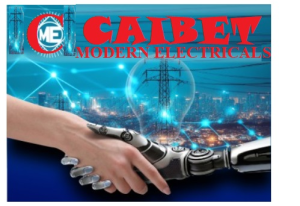TSI
2. IEE REGULATIONS ON TRNKING SYSTEM OF INSTALLATION
The Institution of Electrical Engineers (IEE) Wiring Regulations, now known as BS 7671, provide the definitive standards for the design and installation of electrical systems in the UK. While specific editions and regulations change over time, the core principles regarding trunking remain consistent and are focused on safety, maintenance, and prevention of damage.
Cable capacity and space factor
A critical aspect of trunking installation is managing the number of cables to prevent overheating.
a) 45% space factor: The current regulations require that the total cross-sectional area of all cables in a trunking system must not exceed 45% of the trunking's internal cross-sectional area. This ensures sufficient free air for heat dissipation.
b) Reduced capacity: The space factor must be reduced in sections where cables are pulled in rather than laid in, or where numerous cables cross over each other.
c) Cable factors: Sizing is done by adding up "cable factors" for each individual cable and comparing the total to tables of "trunking factors". This accounts for different cable sizes and insulation types.
Cable segregation
To prevent mutual interference and ensure safety, different types of circuits must be segregated within trunking.
· Voltage bands:
BS 7671 classifies circuits into voltage bands. Band 1 circuits (e.g., data, telecommunications) must be separated from Band 2 circuits (e.g., mains power, emergency lighting).
· Separation methods:
Segregation can be achieved by:
Ø Using multi-compartment trunking with a solid, earthed divider.
Ø Maintaining a minimum separation distance.
Ø Ensuring that all cables are insulated to the highest voltage present in the trunking.
· Electromagnetic compatibility (EMC):
Segregation is crucial to prevent electromagnetic interference (EMI) from power cables affecting sensitive data cables. A metallic, earthed divider offers the best protection.
Earthing and bonding
Proper earthing and bonding are vital for safety, particularly with metallic trunking.
· Metallic trunking: The entire metallic trunking system must be effectively earthed to provide a continuous path for fault currents. This can be achieved through secure mechanical joints or by fitting a separate earth continuity conductor.
· Non-metallic trunking: With PVC trunking, an insulated circuit protective conductor (CPC) must be run within the trunking.
· Accessories: All metallic accessories, such as bends and junction boxes, must have earth continuity across their joints.
Fire stopping
Regulations require the use of fire barriers to prevent the spread of fire through trunking systems.
· Location: Fire barriers must be fitted where trunking passes through fire-rated walls, partitions, or floors.
· Frequency: For long, vertical trunking runs, fire barriers are required at every floor level or at intervals not exceeding 5 meters.
·
General installation requirements
· Protection: Trunking must protect cables from mechanical damage and corrosion.
· Support: The system must be securely supported at regular intervals to prevent sagging or displacement.
· Cable entry: All openings and entries must be smooth and free of burrs to prevent damage to cable insulation.
· Cable support: In long vertical runs, cables must be adequately supported within the trunking to prevent them from slipping.
· Environmental protection: Installation must be suitable for the environment, with specific requirements for areas with high temperatures, moisture, or corrosive substances.
· Accessibility: All connections and joints must be accessible for inspection, testing, and maintenance, though exceptions exist for certain joints.
